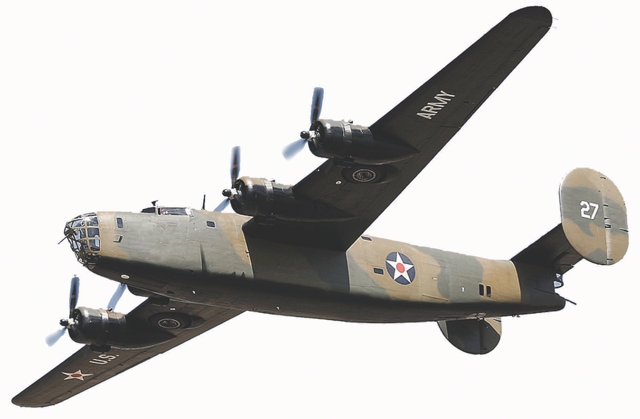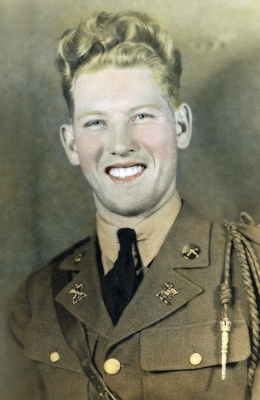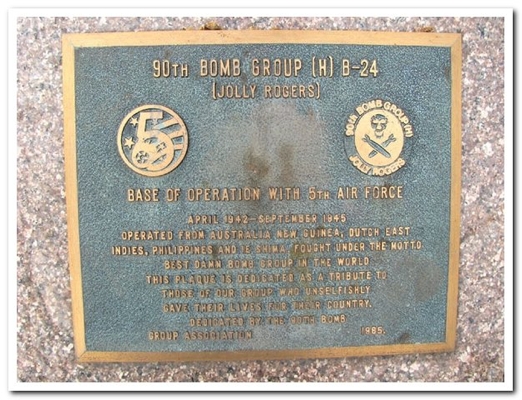After 74 years family learns fate of airman
A phone call, a letter …
You can’t extinguish a question that has rested on your heart for 74 years with a phone call, a letter …
Or can you?
For Dorothy Simpson of Clinton a phone call and a letter started a conversation that led to some answers to questions about her older brother, Corporal Albert James Pyron and took some of that burden away.
“I am researching the disappearance of the B-24 Liberator that your brother was on board that left Iron Range Airfield (Australia) on the 16th November 1942, and to this day continues to still remain unaccounted for and missing.”
Corp. Pyron and nine other members of the crew of the B-24 Liberator, nicknamed “Punjab,” never returned from a mission over Rabaul Harbor on the island of New Britain.
Simpson (maiden name Pyron) and her family lived in Virginia at the time.
“He (Albert) was older than I was … I didn’t know him as well as my siblings. They were very close to him,” Simpson said.
Punjab did not return from its mission on Nov. 16, 1942, but it would be more than a month before the crew was listed as Missing in Action — in a message dated April 23, 1943.
The nuts and bolts of the U.S. Army Air Corps operations didn’t concern the Pyron family, though.
What concerned them was a brother was listed as Missing In Action.
“We didn’t know anything,” Simpson said. “We knew he was in the Air Corps, so was his plane at the bottom of the ocean? Was it in the jungle? You just knew his plane went down. It was part of the war.”
The Pyrons are a military family.
Albert had served in the military in the 1930s, was decommissioned, and then World War II broke out and he went back in.
Simpson’s other brother, Jessie Edward, was a Marine in Ward War II, with service in the Pacific Theater of War.
He closed out his tour with the occupation forces in Japan.
Her sisters, Louise, Clara, Pauline, and Gloria were older and had spent more time with the brothers.
By all accounts they were like any other family touched by the realities of war — the loss and sacrifice, the steadfastness to duty.
But not knowing about Albert …
“I wish,” Simpson said, “My sisters and brother would have known. They were closer to Albert.”
Simpson, who moved to Clinton in 1971, would find out what happened to her brother 74 years after he went missing.
The phone call came from author and researcher Michael Musumeci, and Australian who is research and writing about “U.S. Air Force Servicemen that tragically lost their lives in Australia and New Guinea during World War II. I am writing to you in relation to your late brother, and was hoping you may be able to assist in research.”
Simpson was stunned.
Yes, she knew Albert was missing, but thanks to Musumeci she now knew what had happened that fateful day in 1942.
It was a bombing run.
As part of the 320th Bombardment Squadron, 90th Bombardment Group (H), based at Iron Range Queensland, Australia, the focus was on stemming Japanese aggression towards Australia.
On Nov. 16, 1942, the target was the Rabaul Harbor in New Britain. Light anti-aircraft fire was reported at Jacquinot Bay and Wide Bay and searchlights were used to spot the planes, but “was not especially accurate.”
Four planes from the 319th and 400th Bombardment Squadrons joined in for the mission.
The first plane took off at “2300, East 16 Nov.”
The official reports stated that there was “initial confusion” after the firs take off because some of the planes listed in order of take off were not ready.
Still, the mission got airborne and the target reached “at 0355 and remaine dover area to 0420.”
But heavy cloud cover would not allow for a clear visual of the damage made.
Punjab did not return.
From the squadrom commander after the mission: “Punjab and all aboard are still missing since that tragic day between Iron Range and New Guinea. The whereabouts of the aircraft remain unknown either at the bottom of an ocean, or under well camouflaged overgrown or wrapped within the rainforests or jungles of a remote location — unknown to human beings.”



